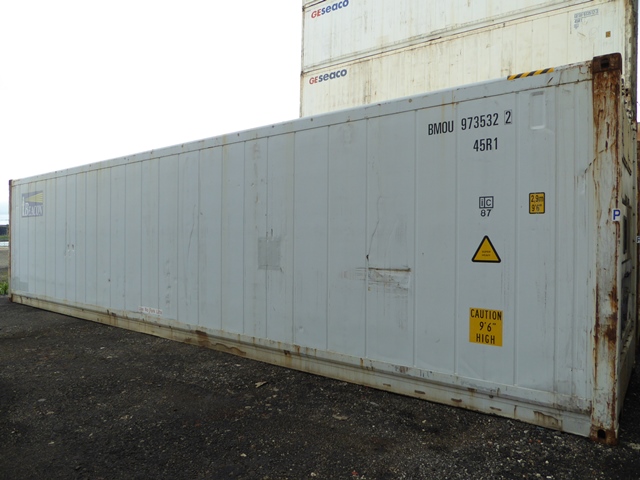How to Properly Maintain and Care for Your Shipping Container Home

Shipping container homes have become a popular choice for those looking for affordable, eco-friendly, and modern housing solutions. While these homes offer durability and a unique aesthetic, they require specific maintenance to ensure longevity and comfort. Like any home, your shipping container home can withstand the test of time with proper care. This guide will walk you through key maintenance tips and care strategies to keep your container home in top shape.
1. Regular Inspections
Shipping containers are made from durable Corten steel, designed to resist corrosion, but this doesn’t mean they are immune to wear and tear. Regular inspections help catch problems early, preventing costly repairs in the future.
- Exterior Walls: Check for any rust spots, dents, or scratches that could expose the steel to moisture. Even though Corten steel is rust-resistant, any damage to the paint or protective coating can lead to rust over time.
- Roof: Inspect the roof for standing water, rust, or dents. Shipping containers are flat, so water can accumulate, leading to rust or leaks. Ensure the roof is properly sloped or install a drainage system.
- Seals and Openings: Look for gaps or damage in windows, doors, and other openings. Poor seals can allow moisture to enter, potentially causing rust or mold issues.
2. Protect Against Rust
Rust is the most common threat to the longevity of a shipping container home. While the steel is designed to resist rust, you should still take proactive measures to protect against it.
- Repaint Regularly: The protective paint or coating on the container prevents rust. Touch up any areas where the paint has chipped or worn off, especially after severe weather or physical damage.
- Apply Anti-Rust Solutions: If you notice any signs of rust, treat them immediately with a rust converter or remover. Afterward, apply a protective coating or paint over the treated area to prevent further damage.
- Keep Dry: Ensure that no moisture accumulates on or around your container home. Water buildup can increase the likelihood of rust, especially on the roof or near drainage areas.
3. Maintain Proper Ventilation and Insulation
One of the challenges with shipping container homes is managing moisture and temperature levels. Proper ventilation and insulation are critical to preventing issues like condensation, mold, and temperature swings.
- Insulation Maintenance: Check that the insulation is intact and functioning properly. Poor insulation can lead to condensation inside the container, which can cause mold growth and rust over time. Spray foam insulation is often used in container homes because it forms a tight seal and is moisture-resistant.
- Ventilation Systems: Ensure your home has adequate ventilation to promote airflow and prevent humidity buildup. Consider installing dehumidifiers in areas prone to excess moisture.
- Seal Leaks: Regularly inspect and seal any leaks in windows, doors, and ventilation systems to maintain temperature control and moisture resistance.
4. Foundation and Structure Care
Shipping containers are heavy, and their weight can cause settling or shifting over time if not placed on a proper foundation. The foundation you choose can affect the longevity of your container home.
- Inspect Foundation Regularly: Whether your container home is on concrete blocks, a concrete slab, or another type of foundation, inspect it regularly for cracks or shifting. A stable foundation ensures that the structure of the container remains strong and doesn’t lead to alignment issues.
- Elevate When Possible: Raising the container off the ground can improve ventilation beneath the structure and prevent moisture buildup, which can lead to rusting from the bottom.
5. Roof Maintenance and Water Drainage
As mentioned earlier, the flat roof of a shipping container can accumulate water, so proper roof maintenance and drainage solutions are crucial.
- Install a Sloped Roof or Covering: A sloped roof over the container can help redirect water away from the structure, preventing rust and leaks. Alternatively, you could install a roof covering made from another material to protect the original roof from wear and tear.
- Gutter Installation: Consider adding gutters to channel water away from your home. This will help prevent standing water on the roof and minimize water damage near the foundation.
- Check for Leaks: Regularly inspect your roof for leaks, especially after heavy rain. Catching leaks early can save you from costly repairs later.
6. Pest Control
Though shipping containers are made of steel, pests can still find ways into your home, especially through unsealed gaps and cracks. These gaps can allow insects and rodents to enter, causing damage and health concerns.
- Seal Gaps: Regularly check and seal any openings where pests could enter. Pay attention to window and door seals, as well as any plumbing or electrical access points.
- Pest Prevention Treatments: Consider pest control treatments around the foundation and openings of your container home to keep unwanted critters at bay. Non-toxic solutions like diatomaceous earth or essential oils can be effective in keeping pests out.
7. Routine Cleaning
Like any home, routine cleaning will help extend the life of your shipping container home. This includes both interior and exterior care.
- Exterior Cleaning: Pressure wash the exterior every few months to remove dirt, debris, and other contaminants that could lead to rust or wear on the paint.
- Interior Cleaning: Keep the interior clean and free from moisture to prevent mold and rust issues. Regular cleaning also helps maintain a healthy living environment.
Conclusion
Shipping container homes are an excellent option for those seeking a modern, durable, and eco-friendly living solution. However, like any home, they require regular maintenance and care to ensure long-term comfort and structural integrity. By following these tips, you can keep your shipping container home in pristine condition, protecting your investment and ensuring that it remains a safe and enjoyable space for years to come.

